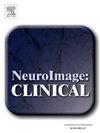GRE和SWI MRI中脑微出血识别的鲁棒深度学习框架
IF 3.6
2区 医学
Q2 NEUROIMAGING
引用次数: 0
摘要
脑微出血(CMB)是在梯度回波(GRE)或敏感性加权(SWI) MRI上可见的小的低信号病变,是各种脑血管和神经系统疾病的重要生物标志物。CMB的准确量化至关重要,因为它们的数量与小血管疾病、中风风险和认知能力下降等疾病的严重程度有关。目前的检测方法依赖于人工检测,这既耗时又容易发生变化。使用深度学习的自动检测提出了一种变革性的解决方案,但由于CMB的异质外观、高假阳性率以及与其他人工制品的相似性,面临着挑战。本研究探讨了深度学习技术在公共(ADNI和AIBL)和私人数据集(OATS和MAS)中的应用,利用GRE和SWI MRI模式来提高CMB检测的准确性,减少假阳性,并确保临床和正常病例(即无脑微出血的扫描)的鲁棒性。开发了用于自动检测的3D卷积神经网络(CNN),并辅以基于You Only Look Once (YOLO)的方法来解决更复杂情况下的假阳性情况。该管道整合了广泛的预处理和验证,在各种数据集上展示了强大的性能。ADNI:平衡精度:0.953,AUC: 0.955,精度:0.954,灵敏度:0.920,F1-score: 0.930, AIBL:平衡精度:0.968,AUC: 0.956,精度:0.956,灵敏度:0.938,F1-score: 0.946, MAS:平衡精度:0.889,AUC: 0.889,精度:0.948,灵敏度:0.779,F1-score: 0.851, OATS数据集:平衡精度:0.93,AUC: 0.930,精度:0.949,灵敏度:0.862,F1-score: 0.900。这些结果突出了深度学习模型在改善CMB相关疾病的早期诊断和支持治疗计划方面的潜力。本文章由计算机程序翻译,如有差异,请以英文原文为准。
A robust deep learning framework for cerebral microbleeds recognition in GRE and SWI MRI
Cerebral microbleeds (CMB) are small hypointense lesions visible on gradient echo (GRE) or susceptibility-weighted (SWI) MRI, serving as critical biomarkers for various cerebrovascular and neurological conditions. Accurate quantification of CMB is essential, as their number correlates with the severity of conditions such as small vessel disease, stroke risk and cognitive decline. Current detection methods depend on manual inspection, which is time-consuming and prone to variability. Automated detection using deep learning presents a transformative solution but faces challenges due to the heterogeneous appearance of CMB, high false-positive rates, and similarity to other artefacts. This study investigates the application of deep learning techniques to public (ADNI and AIBL) and private datasets (OATS and MAS), leveraging GRE and SWI MRI modalities to enhance CMB detection accuracy, reduce false positives, and ensure robustness in both clinical and normal cases (i.e., scans without cerebral microbleeds). A 3D convolutional neural network (CNN) was developed for automated detection, complemented by a You Only Look Once (YOLO)-based approach to address false positive cases in more complex scenarios. The pipeline incorporates extensive preprocessing and validation, demonstrating robust performance across a diverse range of datasets. The proposed method achieves remarkable performance across four datasets, ADNI: Balanced accuracy: 0.953, AUC: 0.955, Precision: 0.954, Sensitivity: 0.920, F1-score: 0.930, AIBL: Balanced accuracy: 0.968, AUC: 0.956, Precision: 0.956, Sensitivity: 0.938, F1-score: 0.946, MAS: Balanced accuracy: 0.889, AUC: 0.889, Precision: 0.948, Sensitivity: 0.779, F1-score: 0.851, and OATS dataset: Balanced accuracy: 0.93, AUC: 0.930, Precision: 0.949, Sensitivity: 0.862, F1-score: 0.900. These results highlight the potential of deep learning models to improve early diagnosis and support treatment planning for conditions associated with CMB.
求助全文
通过发布文献求助,成功后即可免费获取论文全文。
去求助
来源期刊

Neuroimage-Clinical
NEUROIMAGING-
CiteScore
7.50
自引率
4.80%
发文量
368
审稿时长
52 days
期刊介绍:
NeuroImage: Clinical, a journal of diseases, disorders and syndromes involving the Nervous System, provides a vehicle for communicating important advances in the study of abnormal structure-function relationships of the human nervous system based on imaging.
The focus of NeuroImage: Clinical is on defining changes to the brain associated with primary neurologic and psychiatric diseases and disorders of the nervous system as well as behavioral syndromes and developmental conditions. The main criterion for judging papers is the extent of scientific advancement in the understanding of the pathophysiologic mechanisms of diseases and disorders, in identification of functional models that link clinical signs and symptoms with brain function and in the creation of image based tools applicable to a broad range of clinical needs including diagnosis, monitoring and tracking of illness, predicting therapeutic response and development of new treatments. Papers dealing with structure and function in animal models will also be considered if they reveal mechanisms that can be readily translated to human conditions.
 求助内容:
求助内容: 应助结果提醒方式:
应助结果提醒方式:


